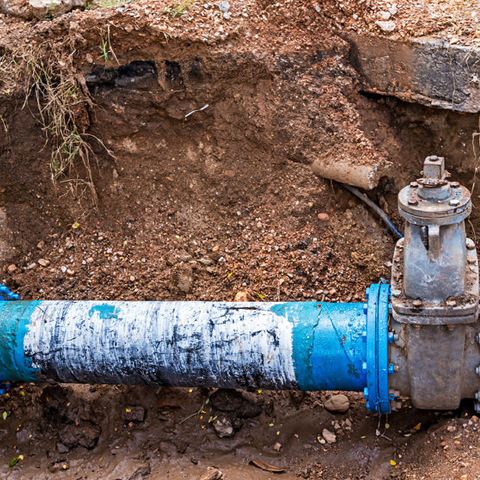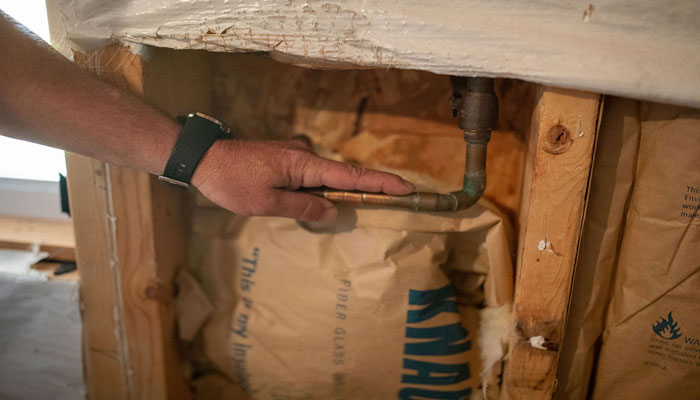Spotting and Quickly Repairing a Burst Pipe: Essential Guidance
Spotting and Quickly Repairing a Burst Pipe: Essential Guidance
Blog Article
Are you currently trying to find insight on How to Install and Connect a New Dishwasher?

A ruptured pipe is a major emergency; you can just stand as you watch water you pay very much to rejoin with the planet. In worse situations, you discover a swimming pool on your kitchen area floor, which is a terrific trip danger, specifically if you have kids around. If the pipeline that ruptured was in your walls, trouble: you might need to paint that whole section.
Just how can a catastrophe like a burst pipeline be stopped as well as managed? Well, by paying attention to your expert emergency plumbings and also complying with these regulations.
Exactly how do I know when my pipes have ruptured?
Rising and fall water pressures
Pipelines do not just burst in a day. You might have observed that your cooking area tap or shower does not run immediately when you turn the faucet. It might stop for a couple of secs and afterwards blast you with even more pressure than common.
In various other circumstances, the water may seem normal at first, after that decrease in pressure after a few secs.
Damp walls and water discolorations
Prior to a pipe bursts, it will certainly leak, many times. If this persistent dripping goes undetected, the leakage might graduate right into a large tear in your pipe. One very easy means to avoid this emergency is to watch out for damp wall surfaces advertisement water discolorations. These water stains will lead you right to the leak.
Puddles under pipelines and sinks
When a pipe bursts, the outflow creates a pool. It might show up that the pool is expanding in dimension, and regardless of the amount of times you wipe the pool, in a couple of minutes, there's one more one waiting to be cleaned up. Commonly, you may not have the ability to map the pool to any type of visible pipelines. This is a sign to call an expert plumber.
Untraceable dripping sounds
Pipeline bursts can take place in one of the most unpleasant places, like within concrete, inside wall surfaces, or under sinks. When your house goes quiet, you might be able to hear an annoyingly consistent leaking noise. Even after you've checked your shower head as well as cooking area tap, the dripping might continue.
Precious reader, the leaking might be coming from a pipe inside your walls. There isn't much you can do concerning that, other than tell an expert plumber.
Shut off the Water
When water ices up, it broadens in volume by concerning 9 percent. As well as it expands with remarkable pressure: The pressure inside pipelines may go from 40 pounds per square inch to 40,000 psi! No pipeline can hold that much stress, so it bursts. The break might happen where the ice kinds, however more often, it happens where water pressure locates a vulnerable point in the pipeline. That may be inches and even feet from the icy area. Discover the water shutoff valve as well as switch off the water to prevent more damage. You may additionally require to shut off the electrical energy also, relying on where the leakages takes place and also how big it is.
Contaminated water
Many people assume a burst pipe is a one-way outlet. Quite the contrary. As water flows out of the hole or gash in your plumbing system, pollutants discover their way in.
Your water may be contaminated from the resource, so if you can, inspect if your water storage tank has any problems. Nonetheless, if your alcohol consumption water is provided and also cleansed by the local government, you ought to call your plumber promptly if you see or scent anything amusing in your water.
What do I do when I spot a burst pipe?
Your water meter will continue to run also while your water wastes. To lessen your losses, discover the primary controls and turn the supply off. The water pipe are an above-ground framework beside your residential property.
How to Fix & Detect a Leaking Pipe
How Do I Know if a Pipe is Leaking?
Leak detection tests can help you determine if your pipe has a leak. Even if you don’t see an apparent leak, you should still conduct leak detection tests regularly to save water and money—and prevent major damage to your home.
Water meter. It can be helpful to figure out what your usual water meter usage numbers are and then monitor them regularly. To monitor your meter, first, turn off all water faucets in your home. Check the meter and write down the numbers. In a few hours, check the meter again. If the numbers have changed, you have a leak. Water gauge. Use a water gauge to test your water pressure. Your showerhead should produce a certain amount of water pressure based on its model and design. If the pressure is lower than it is supposed to be for that specific showerhead, your home likely has a leak. Puddles. Look inside your bathroom, laundry, and kitchen sink cabinets. Puddles around the cabinets or around toilets, tubs, showers, and washing machines indicate the presence of a leaking pipe. You may also notice loose tiles, peeling or flaking paint, or mold caused by water accumulation. Napkin test. Even if you don’t see any puddles, you may still have a leak. You can test for water leaks in the bathroom, laundry, and kitchen by wiping below-sink connections with a napkin, paper towel, or piece of toilet paper. If it becomes damp, you probably have a leaking pipe under the sink. Discolored walls. Walls that are discolored—usually with brown or yellow stains—or bulging might mean that they have been impacted by water damage caused by a leaking pipe. Smell. A leaky pipe will create sitting water, and over time, that water may develop a musty smell. If your home smells musty, but you can’t locate the source, it may be due to a leak. Steps for Fixing a Leaking Pipe
A leaky drain can be remedied by tightening the pipe base, replacing the drain seal, caulking the rim, and tightening the pipe nut. Similarly, a leaking toilet pipe can be treated by tightening the packing nut. You may also need to replace the valve. A leaky faucet may just need tightening or replacement of the washers. If that doesn’t work, consider replacing your faucet. If your pipe has a hole in it, you may want to use a pipe leak sealer or pipe leak tape. This quick fix for water pipe leaks can also temporarily fix a copper pipe leak. https://www.ahs.com/home-matters/quick-tips/how-to-tell-if-pipes-are-leaking/

I found that blog post about How to Prepare for Your Dishwasher Installation when surfing around the internet. Are you aware of another individual who is fascinated about How to install a dishwasher safely? Please feel free to promote it. Kudos for your time. Visit again soon.
Secure your plumbing; seek professionals. Report this page